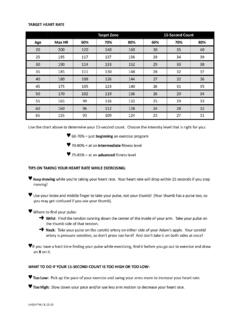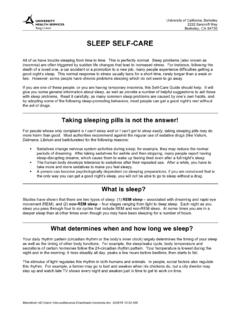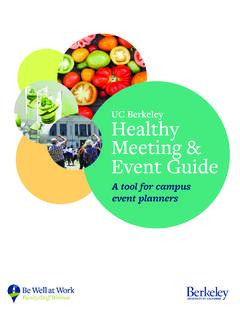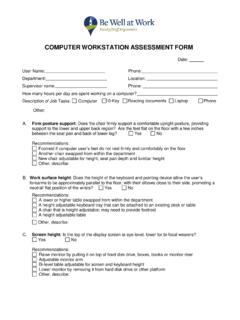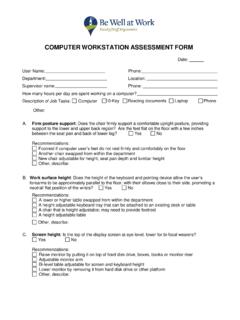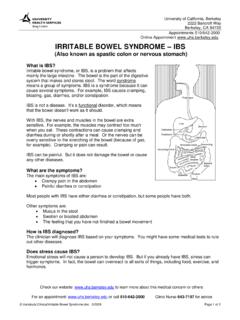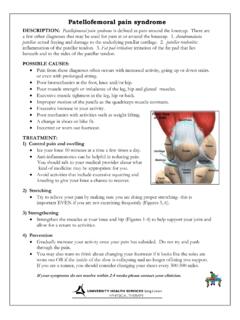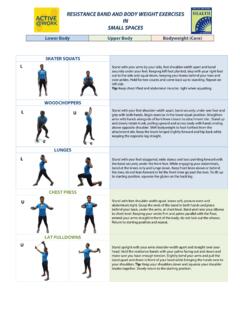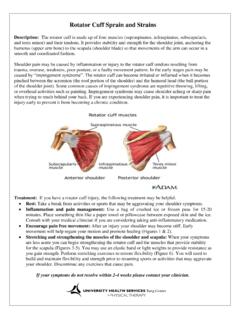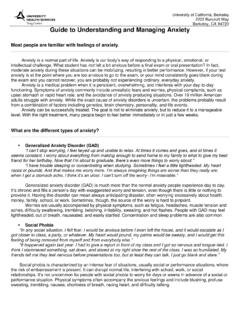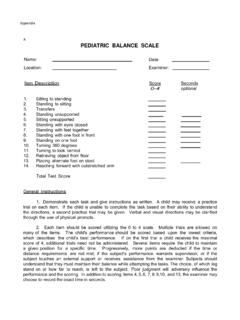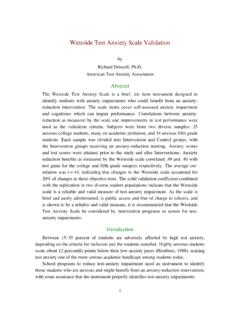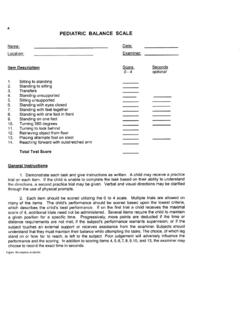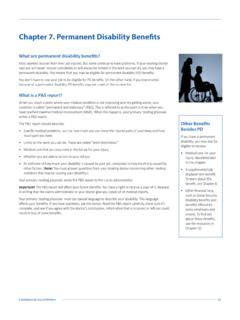Transcription of Head Injury-Concussion and Symptom Scale
1 University of California, Berkeley 2222 Bancroft Way Berkeley, CA 94720 Head Injury/ concussion /Volumes/handouts/Clinical/Head Injury-Concussion and Symptom 1/2019 You have been diagnosed with a concussion . This handout is designed to help you recover safely and prevent further injury. If your symptoms worsen in the first 24 hours after the injury, you may need to seek urgent medical care, so stay with a reliable friend or relative during that time period. A concussion is a traumatic brain injury that alters your brain function. It is common to experience physical symptoms (like headaches, dizziness, fatigue), cognitive symptoms (like difficulty concentrating/focusing, memory deficits), emotional symptoms and sleep disturbances.
2 Most concussions resolve in 7-10 days. Tests like CT scans and MRIs are most often not necessary to diagnose and treat a concussion . Warning Signs If your injury is worsening in any way, including: Inability to wake up Severe/worsening headache Confusion Worsening balance problems Seizures (convulsions) Changes in vision or double vision Problems talking or slurred speech Repeated vomiting (at least 2 episodes) Stiff neck (cannot bend chin to chest) Weakness or numbness in any part of the body Changes in personality/behavior .. You should seek emergency medical care.
3 Home Care Recommendations o Record your symptoms daily on the attached Symptom Scale form to monitor your progress. o Rest your brain: Avoid any activity which increases symptoms. You may need to modify school/work attendance and workload as well as avoid texting, videogames and computer or television usage. o See Return-to-Learn Guidelines on the following page. o If you have trouble with coursework accommodations, call Social Services at Tang (510-642-6074) for advice. o Rest your body: Avoid any exertion which increases symptoms. Resume normal activities gradually, and as tolerated.
4 Avoid pulling all nighters as sleep will help recovery. Take naps or rest breaks when you feel tired or fatigued. o Only take medication as recommended by your clinician. Acetaminophen (Tylenol) is the preferred medicine for pain after the injury. Avoid aspirin, ibuprofen and naproxen unless recommended by your clinician. o Avoid drinking alcohol or taking illicit drugs, sleeping pills, or other substances that change your thinking and/or might worsen your symptoms. /Volumes/handouts/Clinical/Head Injury-Concussion and Symptom 1/2019 Return-to-Learn Guidelines Following a concussion , return to studying and the classroom should take place in a step-wise manner.
5 Please note that the rate in which each student progresses will vary and should be individualized. The general progression is as follows: 1) Start with 5-15 minutes of daily activities that do not increase symptoms; gradually increase the time. 2) Once you are able to tolerate 30 minutes of cognitive activity, it is ok to resume modified class attendance (modified class attendance options include attending the first 30 minutes of classes, breaks between classes, half-days, etc) 3) Once you have returned to class you may increase load as tolerated. If you experience an exacerbation of symptoms, return back to previous level of cognitive activity where you had no symptoms and try to progress again after 24 hours Major exams may not be representative of academic ability in the immediate post-concussive period.
6 We recommend no finals/major exams or projects for 7 days following the diagnosis of concussion . Return to Sports/Activity The injured person should never return to sports or active recreation with any persisting symptoms of a concussion and should not return to any activity until evaluated by a clinician. When all symptoms have resolved at rest, follow a stepwise, Symptom -limited program to return to sports activity outlined There should be at least 24 hours for each stage. If symptoms recur at any stage, you should stop all activity and make a follow-up appointment. Stages 1 through 6: 1.
7 Limit to daily activities that don t provoke symptoms. 2. Light exercise: stationary biking, walking, or light jogging for 10-20 minutes. (Absolutely no weight lifting, jumping or hard running). 3. Moderate exercise with body/head movement: moderate jogging, brief running, moderate-intensity stationary biking; time should be reduced from your normal exercise routine. Light weightlifting may be added at this step as well. 4. Non-contact exercise: running, high-intensity stationary biking, your regular weightlifting routine, and non-contact sport-specific drills (eg, shooting, passing, throwing); time should be close to your normal exercise routine.
8 5. Full-contact training/activity: regular exercise routine or practice. If you participate in sports such as basketball, volleyball, baseball/softball, lacrosse, or any Intramural or Club sports you should be cleared by a medical professional prior to this step. 6. Return to full competition/games. Post concussion Syndrome Sometimes after even a minor head injury, people notice persisting symptoms of a concussion (some examples are listed below). Talk to your doctor if these symptoms are worsening, or if they persist more than 7-10 days. o Difficulty concentrating; feeling mentally foggy o Difficulty learning and memory problems o Vision changes o Headaches, especially with stress or physical activity o Mood changes (irritability, sadness, nervousness, more emotional) o Increased sensitivity to noise or light o Dizziness, balance problems, or nausea o Unusual fatigue; feeling tired.
9 Drowsiness or change in sleep patterns o Difficulty in relationships with other people o Increased susceptibility to alcohol (becoming drunk more easily) /Volumes/handouts/Clinical/Head Injury-Concussion and Symptom 1/2019 Head Injury Daily Checklist Instructions: Each day, grade the 22 symptoms listed with a score of 0 through 6. Add the total at the bottom to create your total score for that day. TODAY S DATE Headache Pressure in head Neck Pain Nausea or vomiting Dizziness Blurred vision Balance problems Sensitivity to light Sensitivity to noise Feeling slowed down Feeling like in a fog Don t feel right Difficulty concentrating Difficulty remembering Fatigue or low energy Confusion Drowsiness Trouble falling asleep (if applicable)
10 More emotional Irritability Sadness Nervous or Anxious Total Score None Mild Moderate Severe 0 1 2 3 4 5 6 Head Injury Symptom Scale /Volumes/handouts/Clinical/Head Injury-Concussion and Symptom 1/2019 Directions: Patient: After reading each Symptom , please circle the number which best describes the way you have been feeling today. A rating of 0 means you have not experienced this Symptom today. A rating of 6 means you have experienced severe problems with this Symptom today. Then, answer the questions at the bottom of the form. Clinician: Review, sign, and send to medical records for scanning.
